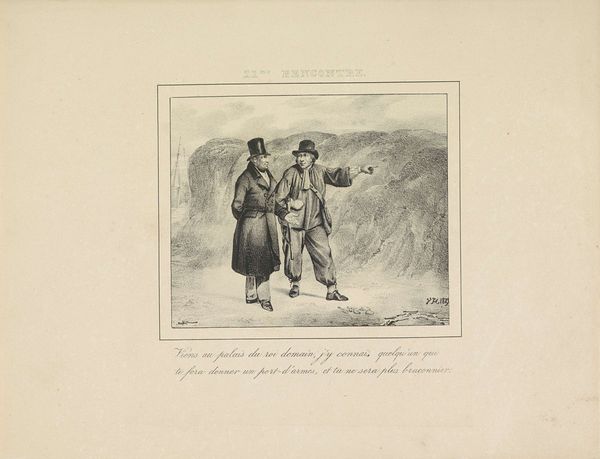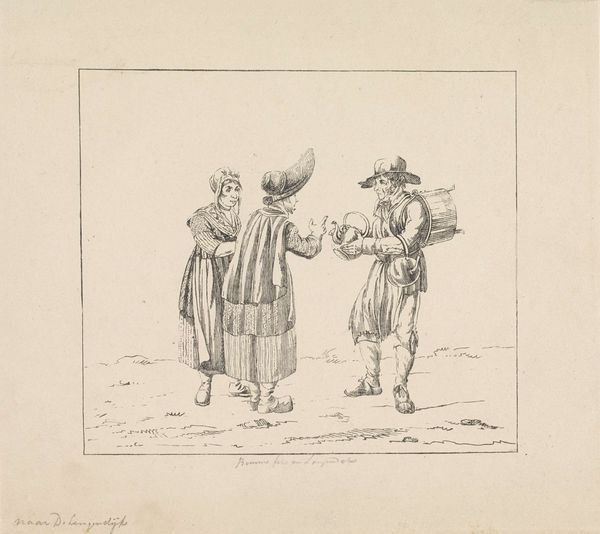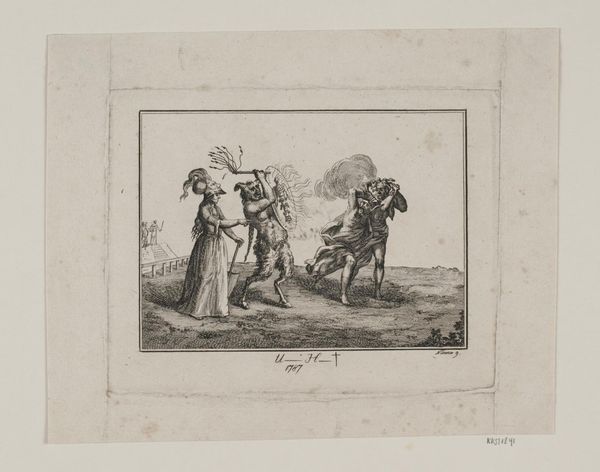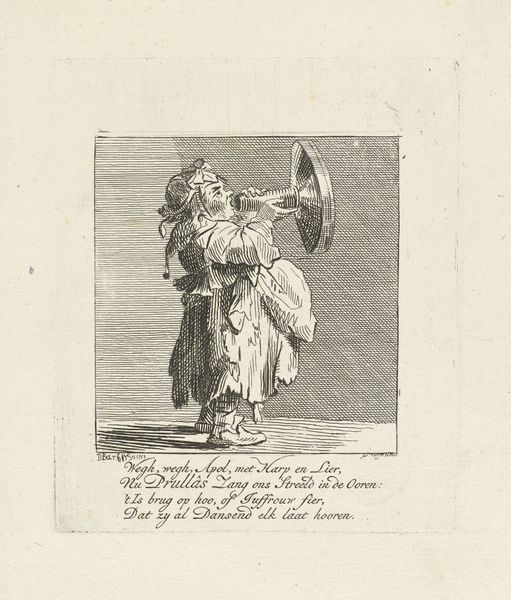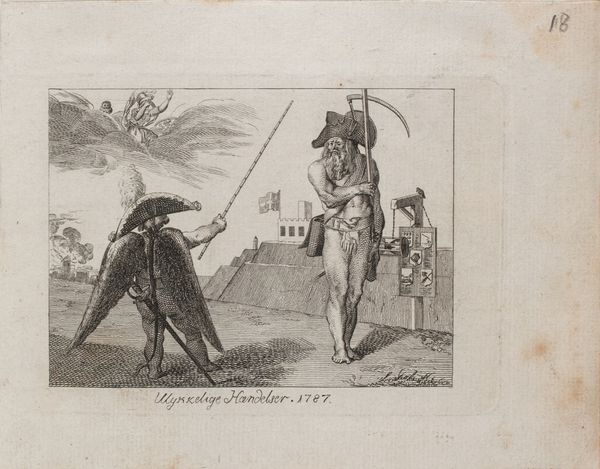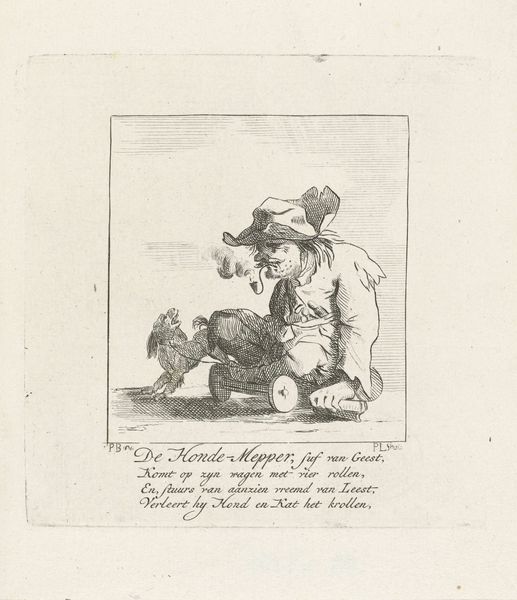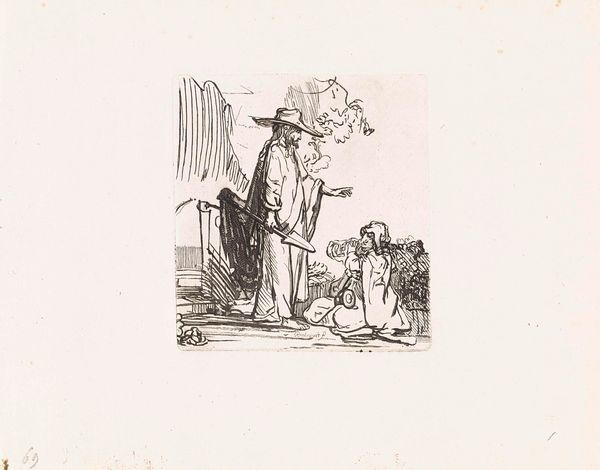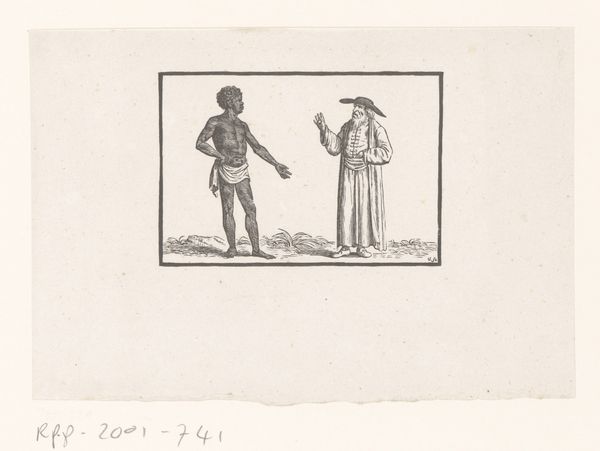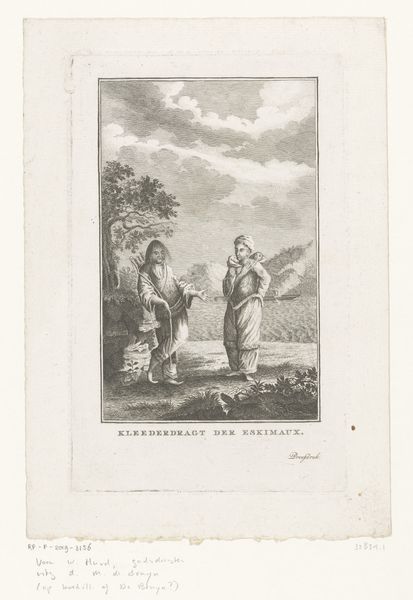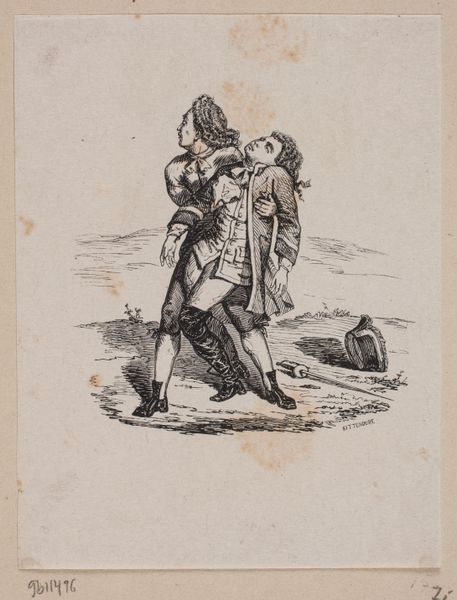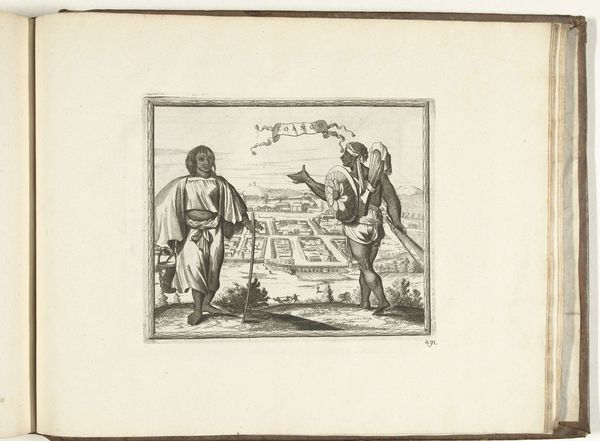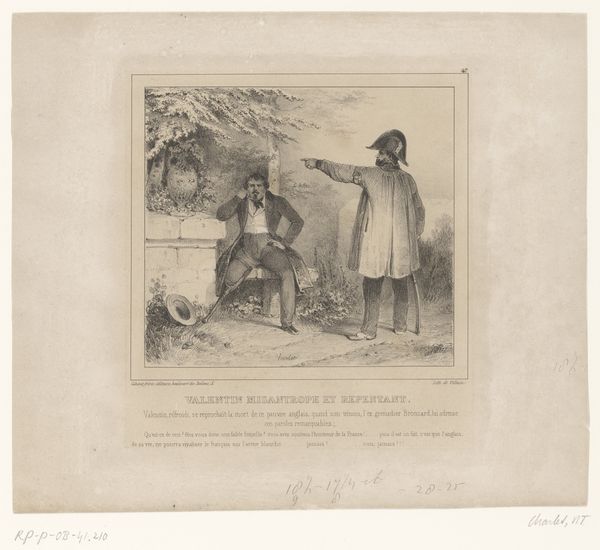
drawing, pen
#
drawing
#
caricature
#
figuration
#
pen
#
genre-painting
Dimensions: height 149 mm, width 162 mm
Copyright: Rijks Museum: Open Domain
Editor: This drawing, "Karikatuur van twee om een vrijer kijvende marktwijven" from 1861 by Pieter van Loon, uses pen and ink, and it immediately struck me because of its seemingly simple depiction of labor, but also its sharp commentary. What can we read in its materiality and context? Curator: Looking at this drawing, it's crucial to consider the pen and ink not just as tools for representation, but as direct evidence of the artist's labor and the means of production. Consider, for instance, how the hasty lines might reflect the pace of urban life or a desire to capture a fleeting moment of social exchange. Also note the labor these women depict; can we interpret this art piece as commentary on the role and plight of female merchants within a burgeoning capitalist society? Editor: That's a fascinating point about the line work reflecting the pace of urban life! The materials themselves become part of the story. So the act of creating this piece reflects society. Does that mean the contrast between high art drawing and the 'low' subject matter is itself a social statement? Curator: Precisely. Van Loon elevates what might have been seen as a commonplace street scene. This elevation through artistic intervention draws our attention to the lives of the working class. It also invites the viewer to participate in the socio-political context of Dutch society during this time. Consider how the piece plays with the emerging consumer culture – what goods are these women trading, and who consumes them? What's being "consumed" or exchanged in this artwork and where? Editor: That is a thought provoking new insight on consumerism through materiality, and thinking about consumption in relation to subject and object! Curator: I believe the interplay between the scene depicted, its material execution, and the socio-economic reality it reflects can speak volumes about the power structures and everyday struggles of the time. Thank you!
Comments
No comments
Be the first to comment and join the conversation on the ultimate creative platform.
